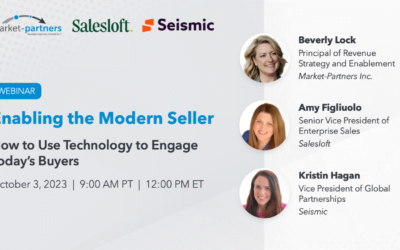Thankfully, the world finally seems to be talking about the Customer Buying Journey. It took me far too long to realize that when you are committed to a selling process, it really helps to have someone involved who is equally committed to a buying process. Because it’s not the marketing and selling that ensures a deal, it’s the buying journey. Sure, marketing and sales can have an impact, and must do so to earn their keep, but the only way to guarantee a buyer buys is to have them successfully complete the stages of their buying journey.
For this reason, there is tremendous benefit associated with deeply understanding your market’s buying journey: what they do, who gets involved, how they make their decisions, when and where they may reach out to others, what motivates them, and where the anxieties and concerns may be. As a result of talking with thousands of buyers and mapping some 200 buying journeys, the fascinating thing we discovered is that, in a particular market, buyers buy in remarkably similar ways. This means that the long list of qualities above can indeed be decoded to reveal predictable buying behavior. In fact, we now use this simple finding to determine the bounds of a market – buyers that buy in similar ways.
From our research, we also know how disconnected sellers are from buyers. Buyers share with us that most of the collateral they receive, from both sales and marketing, fails to deliver value to them. Moreover, it’s lost in the vast array of information they receive and have at their fingertips. This is a sad reflection on our professions, but by looking into our own inboxes we can see the problem. Armed with technology, companies can blast out collateral like rain from a thundercloud. Even more disappointing is that amongst this downpour there are gems: insightful whitepapers, case studies, research findings, and articles (like this one!). Yet to the recipient, it can all too easily look like more of the storm.
The answer to this conundrum is then collateral that is truly relevant to those receiving it. Though that advice may sound obvious, true relevance means something the specific person would find valuable, that is not easily gained in another fashion, and that is important to them at that time – which could even be a fleeting moment.
This ties directly back into the importance of the buying journey; the only way to achieve this objective is to understand what happens at every single stage. To illustrate, think of a buying journey as a voyage of discovery. As a buyer moves from step to step in their journey, they become more educated in terms of what they need, what they need to do, what options they have available, and the implications of certain choices. Logic then dictates that what they are interested in changes depending upon where they are in their process and what the role they are playing. Additionally, if they are looking at things from a financial, technological, end user, or specialist perspective, their needs, wants, and interests will all be different.
By mapping the buying journey, we can predict these points of interest. When we know who is going to be involved and what they find valuable at every step, we can then synchronize messaging and collateral, by the role or persona, for that stage of the buying journey. Using this method, we have found that the probability of adding value significantly increases while the chances of being ignored drops dramatically. And the best part? As Seismic customers, we are in the perfect position to deploy such a strategy.




